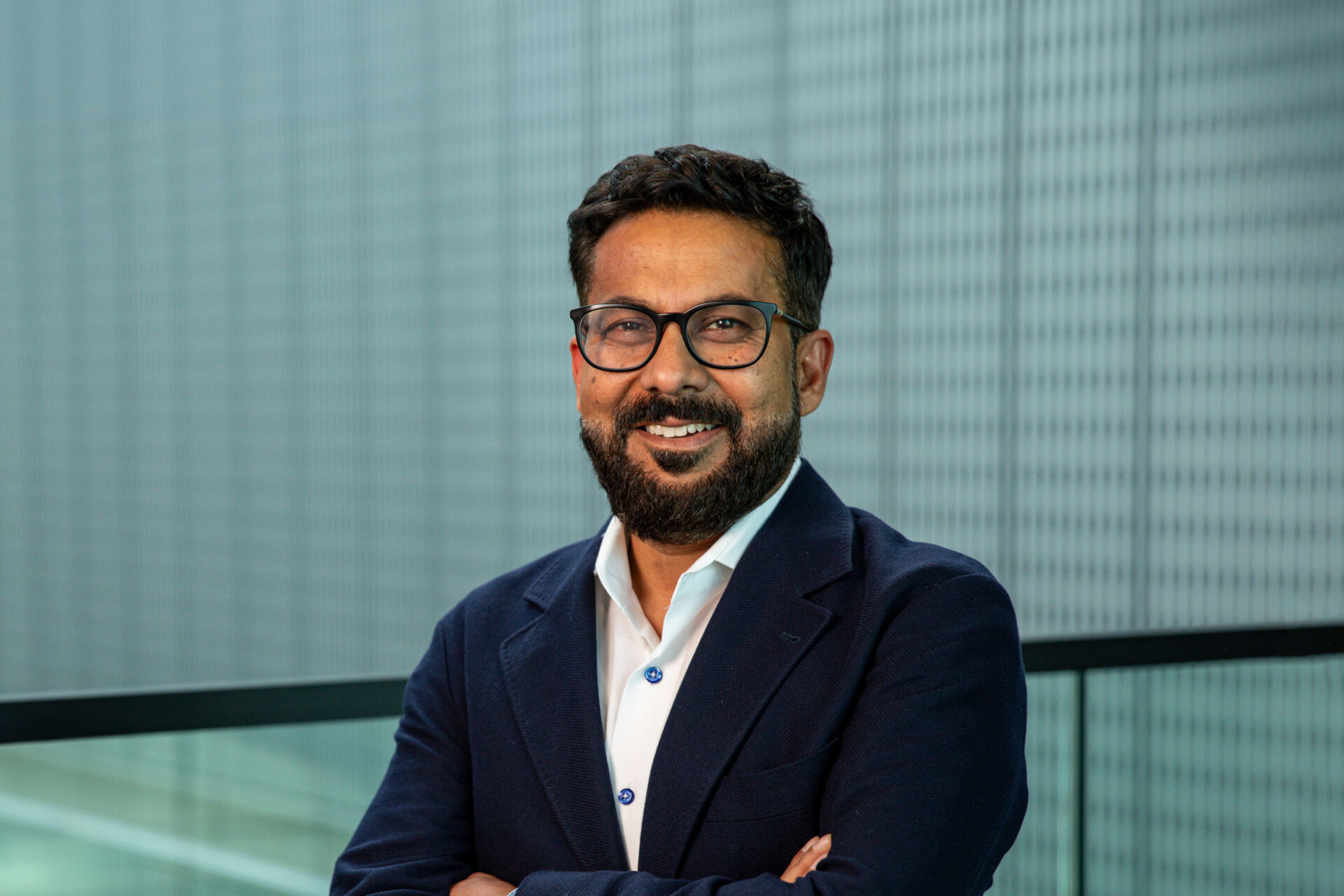Going ‘All In’ on AI: Inside EY’s $1.4 billion investment in the future of work
How do the knowledge leaders learn about AI? UNLEASH sits down for an exclusive interview with Raj Sharma, EY Global Managing Partner of Growth and Innovation, to get the full story.
HR Leader Insights
One of the world's largest consultancies, EY, is going 'all in' on its AI strategy through a $1.4 billion investment.
Upskilling has played a crucial role in preparing EY's 400,000-strong global workforce for the AI era.
UNLEASH speaks exclusively to Raj Sharma, EY Global Managing Partner of Growth and Innovation, to get the inside story of the consultancy giant's AI strategy.
Going ‘all in’ is often a calculated risk – even the surest of hands isn’t a guaranteed winner, but when it comes to AI and the future of work, organizations are becoming more confident at ensuring they are in the strongest possible position for the future of work.
London-based consulting giant EY is one such example. Consulting firms, by nature, must be at the forefront of innovation – both technological and strategic – to guide others through challenging operating conditions.
Accelerated technological change, geopolitical disruption and new priorities for attracting and retaining talent are all key points of attention for employers and HR leaders alike, and EY has gone ‘All In’ to make sure it is in the vanguard shaping the new world of work.
EY affirmed its commitment to an AI-based strategy with the investment of $1.4 billion over five years, which included the launch of the EY.ai platform to bring together all the organization’s AI innovation and development efforts under a single unified platform.
As Raj Sharma, EY Global Managing Partner of Growth and Innovation, explains exclusively to UNLEASH, that also meant “turning the lens inwards and treating EY as the initial client — Client Zero — to pinpoint where the greatest value and returns could be realized.”
“For many organizations, they want to be conscious of where they benchmark and understand how their current AI capabilities stack up in order to quickly identify opportunities to improve,” Sharma says.
“We developed the EY.ai Maturity Model, which systematically reviews where a business stands compared to peers and their own ambitions, so they can strategically close gaps.”
The growing need for upskilling in the age of AI
In order to realize the best results for its clients when it comes to AI, EY underwent a wide-ranging upskilling program of its own, part of its approximately annual spend of $400 million on learning and development.
“We have a workforce of more than 400,000 skilled people across 150 different geographies who are experiencing unprecedented change,” Sharma details.
It’s this huge exposure to change through our employees that makes us uniquely positioned to help organizations solve the difficult challenges facing them.”
Additionally, more than 83% of employees have completed EY’s foundational AI learning and more than 115,000 EY Badges in AI have been completed or initiated, he adds.
Sharma details that amidst the drive to create what he labels as “exponential value” through AI, the EY teams encountered a “proof of concept fatigue” as disjointed and scattered AI projects throughout the global organization “threatened to dilute focus and squander resources.”
As a result, he says, the ambition to augment people’s potential brought EY face-to-face with the “imperative for comprehensive upskilling and change management.”
This, at a time when “the regulatory landscape underwent significant global shifts, demanding agile adaptation of risk management processes to the fast pace of AI innovation,” Sharma adds.
He points to the deployment of EY’s private Large Language Model (LLM), EY.ai EYQ, launched in September 2023, which has already recorded 92 million prompts.
“Following its launch, we expanded EYQ into an ecosystem of GenAI capabilities, deploying a Skills Foundry Academy with over 1,000 potential AI skills, such as the ability to prepare legal documents or support negotiating strategies,” Sharma details.
As AI proliferates and becomes more advanced, workers that aren’t provided with opportunities to gain new and improved skills may feel that their priorities aren’t being acknowledged by employers.
Sharma also highlights that this is coinciding with a generational shift in the workforce where priorities are changing.
Successful companies, he explains, will use output derived from greater efficiencies as an “opportunity for continuous learning to enhance the workforce’s career pathways and to develop new capabilities.”
“Nearly three quarters (72%) of the EY workforce is under 35 and so, realizing the needs of your future leaders – and delivering on them – is crucial to develop highly engaged teams over the long-run,” Sharma says.
I see the resurgence of a real entrepreneurial spirit – which isn’t surprising when you realize this is the side hustle generation after all.”
Steering a course through a new landscape

Raj Sharma, EY Global Managing Partner of Growth and Innovation
Of course, no-one has all the answers on AI yet and many organizations are still in the early stages of AI readiness, especially for those with the EU AI Act to contend with in the near future.
Sharma says that AI is, on the one hand, a clear part of the “massive disruption” EY is seeing across its clients and beyond.
But on the other, we know that AI really is going to inform the solution itself, and 99% of global CEOs are already investing in the tech – and many of those are really making some big bets on it,” Sharma explains.
However, no single leader or organization will be able to formulate solutions or answers in isolation, including EY.
“To bolster the expertise we provide global organizations, we’ve recently launched our own AI advisory council that brings together 11 external experts from industry and academia,” he adds.
“It’s an initiative I’m personally very involved with, leading this alongside my colleague Gil Forer.
For EY, faced with what Sharma describes as “rapid market evolution and the arrival of groundbreaking technologies like ChatGPT,” the challenge was “not to succumb to a reactionary stance” but to “assess and refine the AI strategy thoughtfully”.
This would ensure that each step undertaken was in service of building a “lasting confidence in AI” and “empowering responsible transformation.”
“We’ve focused our AI journey on the employee experience and key drivers of transformation success such as encouraging experimentation through access to low-code/no-code environments and setting up community forums and competitions,” Shama says.
Early evidence shows that teams are hugely receptive to new AI capabilities, which is no easy feat to accomplish across a global workforce of 400,000. I’m proud of the huge strides we’ve made in upskilling our people.”
Look out for part two of this in-depth interview coming soon on UNLEASH.
Sign up to the UNLEASH Newsletter
Get the Editor’s picks of the week delivered straight to your inbox!

Senior Journalist
John Brazier is an experienced and award-winning B2B journalist and editor, with a strong track record of hosting conferences, webinars, roundtables and video products. He has a keen interest in emerging technologies within the HR space, as well as wellbeing and employee experience topics. Prior to joining UNLEASH, John both led and wrote for various global and domestic financial services publications, including COVER Magazine, The TRADE, and WatersTechnology.
Get in touch via email: john@unleash.ai
